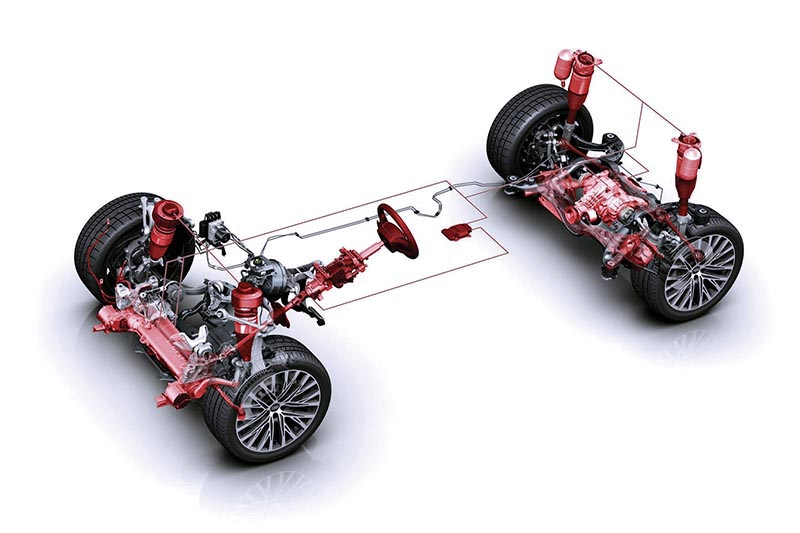Auto suspensions
If a one ton car had hard wooden wheels the weight would make driving a car at speed nearly impossible. The shocks from potholes and bumps would be so uncomfortable that the driver would have to drive very slowly. The shocks to the steering would also make it very difficult to control and very unsafe. This problem had earlier been faced by horse carriages and carts long before cars and they therefore provided springs between the wheels and the body to absorb a part of the shock. But as carriages became motorised they moved much faster and the suspension system had to be improved to absorb many more road shocks.
Rubber tires were a big help especially soft tires with an air filled pneumatic tube pioneered by Michelin of France. They not only absorbed many more road shocks but also had much less tendency to slip or skid. Later ingenious designers tried other devices to make the ride smoother and safer. Citroen of France once had all the four wheels suspended on long swinging arms that were connected to each other by rods to each other inside an oil filled tube to transfer some of the shocks from the front wheels to the rear. Some cars had wheels that were fixed to axles that could also twist to absorb road shocks.
With the advent of hydraulics some fifty years ago separate hydraulic shock absorbers were fitted between the axles and the body of the vehicle. A piston in an oil bath inside the tube absorbed some of the shocks and made the ride much smoother and `shockers’ soon became standard on most cars. Though these were much better the car designers wanted even better shock absorption to make their cars safer at constantly higher speeds and more comfortable for the passengers. Today some modern vehicles have replaced mechanical suspensions systems of springs and shock absorbers with a pneumatic system — that are like hi-tech footballs, replacing the springs and shockers and positioned between the axles and the body and electronically controlled air pressure cushioned the ride.
Electronics, during the past twenty years, was to make another huge contribution. These had first been used for the brakes because better braking also played a major role in the safety and comfort of a car. Today many modern cars have simultaneous electronic management of the brakes, steering and the suspension. Electronic sensors on the brakes replaced the sudden grabbing of the brake shoes with brake pressure being applied on and off at several hundred times a minute to ensure that the wheels could keep rolling a little to stop ensure that the tread of the tire did not clog up with wet mud and have a tendency to skid. These anti-skid anti-lock braking systems are named ABS. In some modern cars these electronic brains could even calculate the pressure on all four wheels to keep the car steady even if one wheel got a big jolt from a bump or pothole. Driving a Porsche fast around a bend can feel a bit strange as the microchips stop any tendency to lean outwards as is usual.
Most passenger cars have soft settings for a comfortable ride but sports cars are stiffer to give better handling and control on curves. The suspensions on racing cars are very hard. The new technologies usually first appear on expensive cars but the suppliers of these new systems offer them quite quickly to the makers of cheaper models.
The author is the region’s most celebrated automobile columnist





